Celestial Bodies - Definition, Classification, FAQs

Define Celestial Bodies:
You've probably come across the term celestial body in your science textbook at some point. Have you ever been curious about what are celestial bodies? The sun, moon, planets, and stars are examples of celestial bodies or heavenly bodies. They are a part of the huge cosmos we live in, and they are usually rather far away. Such objects abound in the brilliant night sky, and when observed through a telescope, they reveal intriguing worlds of their own. We can't see them all with our naked eyes since they're so far away, so we use telescopes to study them.
Celestial Meaning: Any natural body outside of the Earth's atmosphere is referred to as a celestial body.
Also read : NCERT Solutions for Class 8 Science Chapter 17 Stars and The Solar System
Celestial bodies Classification:
1) Planets
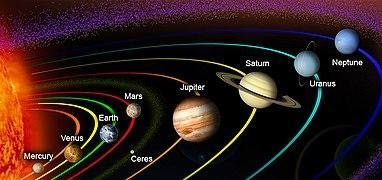
The planets appear to be stars, yet they do not have their own light. They only serve to reflect the light that falls on them and study of stars is called as Astronomy. A planet's orbit around the sun follows a specific path. An orbit is the name for this path. A planet's period of revolution is the amount of time it takes to complete one revolution. A planet revolves on its own axis, much like a top, in addition to circling around the sun. The period of rotation of a planet is the amount of time it takes to complete one rotation. Some planets are known to have moons or satellites that orbit them. The term "satellite" refers to any celestial body that revolves around another celestial body.
Also read -
- NCERT Solutions for Class 11 Physics
- NCERT Solutions for Class 12 Physics
- NCERT Solutions for All Subjects
2) Asteroids
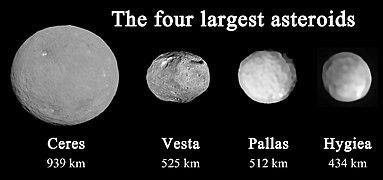
The orbits of Mars and Jupiter are separated by a significant distance. A great number of tiny objects that rotate around the sun fill this space. These are referred to as asteroids. Asteroids can only be viewed with the use of a powerful telescope
3) Comets

Comets are members of our solar system as well. They travel in highly eccentric orbits around the sun. Their time of revolution around the sun, on the other hand, is usually quite long. A comet is typically seen as a bright head with a long tail. As it gets closer to the sun, the length of the tail lengthens.
4) Meteors and meteorites
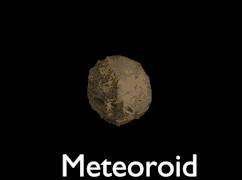
When the sky is clear and the moon isn't visible, you could notice bright streaks of light in the sky at night. Although they are not stars, they are usually referred to as shooting stars. Meteors are what they're called. Meteorite is a body that reaches the earth's surface. Meteorites aid scientists in determining the nature of the material that produced the solar system.
Related Topics Link, |
5) Stars
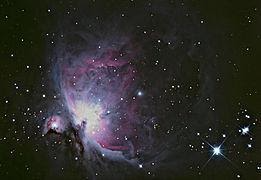
Stars are massive gaseous spheres that can generate their own light. In their cores, stars transform Hydrogen gas into Helium, releasing energy. Stars are enormous in size and have a powerful gravitational pull. The sun is a medium-sized star that provides us with energy and allows us to live on this planet
6) Satellites
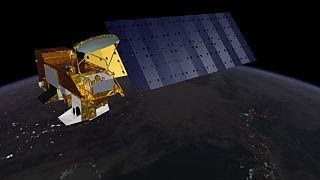
Satellites are astronomical objects that orbit planets. They are an important component of the celestial bodies. These could be from nature or sent by humans. The moon is a natural satellite of the Earth that rotates around it due to the gravitational pull of the Earth.
7) Galaxies
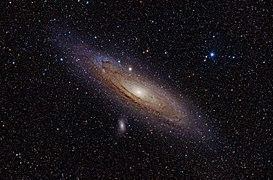
Galaxies are massive clusters of stars bound by gravity. The Milky Way is a galaxy that includes the sun and the solar system. Other galaxies are typically so far away that they appear in the night sky as stars. On a clear night, the Andromeda galaxy and the Large Magellan Cloud can be seen with the naked eye.
NCERT Physics Notes :
What are Celestial bodies: Celestial bodies include the sun, moon, and any other things visible in the night sky. Some celestial planets are enormous and extremely hot. Gases make up their composition. They generate their own heat and light, which they release in vast quantities. Stars are the names given to these heavenly bodies.
What are Heavenly bodies
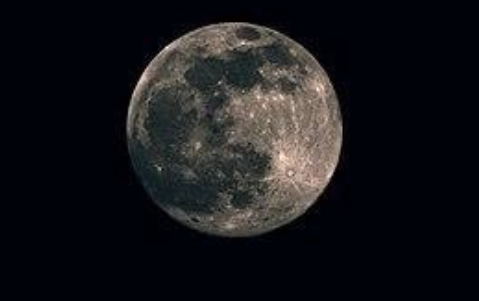
The sun, planets, moon, and stars are examples of celestial bodies meaning or heavenly groups. They are a part of the vast cosmos we live in, and they are usually rather far away from us.
Why is the sun called a star: Stars are space objects that generate their own energy by fusing gases together. You know sun which heavenly bodies in the sky produce their own light. Our solar system's star, the Sun, is a star because it generates energy through the fusion reaction of Helium into Hydrogen.
Definition of celestial body: A celestial body, by definition, is a natural object that exists outside of the Earth's atmosphere. The Moon, Sun, and other planets in our solar system are examples. But these are only a few examples.
Which galaxy does our solar system belong to? The Milky Way is the galaxy that contains our Solar System, and its name refers to how the galaxy appears in the night sky from Earth: a hazy strip of light generated by stars that cannot be identified individually with the naked eye.
Jupiter
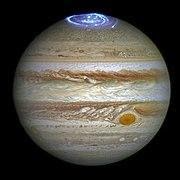
Jupiter is the most massive planet in the solar system. It's so big that it could fit around 1300 Earths inside it. Jupiter's mass, on the other hand, is about 318 times that of our planet. On its axis, it rotates incredibly quickly. Jupiter is surrounded by a vast number of satellites. It has faint rings all around it and appears pretty brilliant in the sky. You can see four of its huge moons if you look at it via a telescope.
Also check-
Frequently Asked Questions (FAQs)
Artificial satellites are quite beneficial in our everyday lives. We couldn't fathom our lives now without them. With the help of these satellites, all internet and communications services are available. They're used for weather forecasting and transmitting television and radio broadcasts, among other things.
Since it is obscured by dense clouds, Venus is the brightest planet. Because it is the closest planet to Earth, its thick clouds reflect the majority of the sunlight that reaches it (about 70%) back into space. As a result, it appears to be the brightest.
Earth has the following unique characteristics: The most unique feature of Earth is that it is the only planet in our solar system where life may be found. The existence and persistence of life on Earth are dependent on certain unique climatic circumstances.
Yes, I'm interested in going to the moon since we've heard a lot of rumors about it since we were kids. I'd like to visit there and learn more about the situation. I'd like to go into its atmosphere and observe the Earth from there.
Venus, Jupiter, and Saturn have all been visible in the sky. I've seen Venus both in the morning and in the evening sky. I've seen Jupiter and Saturn in the early morning sky, just before the sun rises.